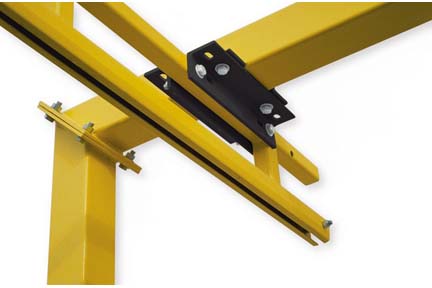Hook coverage, otherwise known as working span, determines a crane hook’s ability to reach various areas. The hook’s ability to get close to bridges and runways is also a factor in determining crane hook coverage. Maximum crane efficiency and flexibility can only be achieved by optimizing hook coverage.
How to Determine Hook Coverage
 There are several ways to determine hook coverage. These include:
There are several ways to determine hook coverage. These include:
- The side approach. This side approach will help you determine the crane’s usable lateral working span; however, this is typically not a symmetrical dimension. The hoist trolley normally has a short and a long side. The short and long sides must be determined when installing a crane to ensure the side approach span is adequate.
- The end approach. The end approach is the hook’s centerline coverage, allowing end-to-end movement. Unlike the side approach, it is typically symmetrical. The entire span of the crane may be larger than the actual working span based on the runway length. When extra hook coverage is required, a zero clearance end stop can provide approximately one foot of lateral or centerline coverage.
When determining the necessary crane hook coverage, it is vital to know the working space in detail. The floor-to-ceiling height along with walls and objects in the work area may limit the hook’s working span. It is ideal to consider any changes and optimizations before the project is complete. Once complete, optimizing the working span can be expensive and may interfere with daily productivity.
Measuring Crane Size Requirements to Maximize Coverage
 Proper measurements are essential to maximizing hook coverage. Important measurements include:
Proper measurements are essential to maximizing hook coverage. Important measurements include:
- Runway beam size. Measure the runway beam size from the bottom to the top of the beam. This measurement is helpful in determining the approximate system height.
- Runway rail size. The runway rail size impacts the wheel size of the crane. The runway rail height and width are crucial measurements to keep the rails in alignment and get the most longevity.
- Crane span. The crane span is the measurement between runways, typically covering the width of the bay. Exact measurements are vital to procuring enough material to form the girders and provide accurate drawings.
- Runway length and distance between runway supports. The runway length and runway support measurements go hand-in-hand. The supports must be able to hold the weight of the crane relative to the runway length.
The building clearance and any AC ducts, heaters, fixtures, pipes, and electrical lines should be considered to ensure there are no unintended obstructions or clearance issues. OSHA states the minimum clearance must be 3’ overhead and 2’ laterally at all times to comply with Crane Manufacturers of America Inc., Specification 61 under 1910.179(b)(6)(i) Overhead and Gantry Cranes.
Rely on ACECO to Maximize Hook Coverage
Hook coverage is vital to optimizing the efficiency of your crane. American Crane & Equipment Corporation (ACECO) can help you maximize your equipment while complying with standards and regulations. At American Crane, we are your Expert, Craftsman, & Partner, with the nation’s leading crane products and dedicated customer service.
To learn more about American Crane’s products and services, view our catalog, or contact us today.

